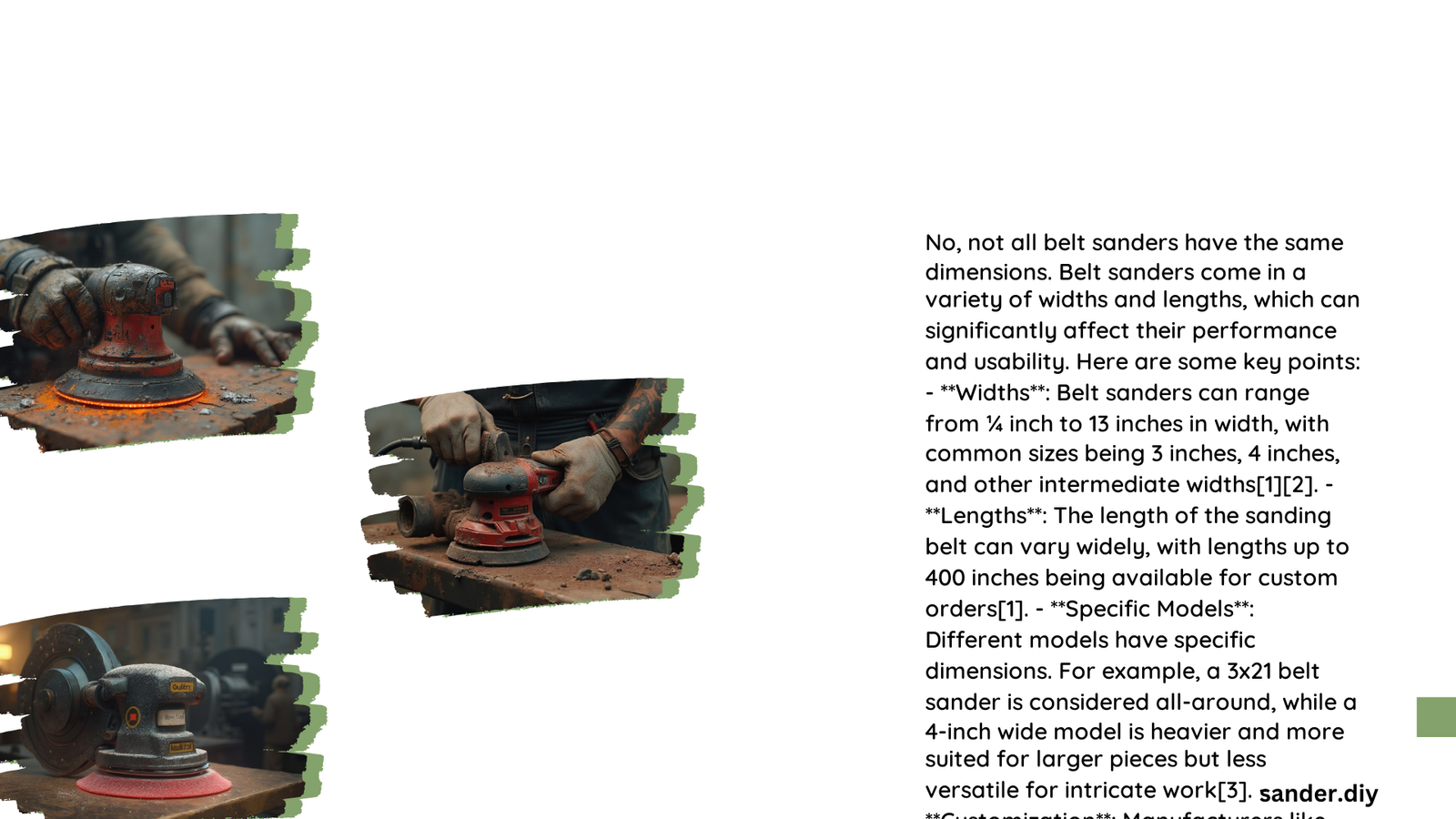Belt sanders come in a wide range of dimensions, challenging the assumption that all are identical. From compact 9mm models to robust 6″ x 48″ heavy-duty sanders, the size varies significantly based on intended use, power requirements, and specific woodworking applications. Understanding these dimensional differences is crucial for selecting the right tool for your project, as belt width, length, and overall design directly influence sanding performance and efficiency.
What Determines Belt Sander Size?
Belt sanders are not uniform in dimensions, with sizes ranging from small, precision-focused models to large, industrial-grade equipment. The primary factors influencing size include:
- Intended Application
- Power Requirements
- Material Removal Capacity
- Workspace Constraints
How Do Belt Sander Dimensions Vary?

Small Detail Sanders
- Belt Width: 9-13mm
- Typical Use: Precision woodworking
- Advantages:
- High maneuverability
- Excellent for intricate surfaces
- Lightweight design
Medium Workshop Sanders
- Belt Size: 3″ x 21″
- Typical Use: Home workshop projects
- Characteristics:
- Balanced sanding area
- Moderate weight
- Versatile performance
Heavy-Duty Industrial Sanders
- Belt Size: 4″ x 24″ to 6″ x 48″
- Typical Use: Large surface preparation
- Features:
- Maximum material removal
- High-powered motors
- Robust construction
Comparative Dimensions Table
| Sander Type | Belt Width | Belt Length | Typical Weight |
|---|---|---|---|
| Compact Detail | 9-13mm | 533mm | 1.6-2.1kg |
| Workshop Standard | 3″ | 21″ | 3-4kg |
| Heavy-Duty | 4-6″ | 24-48″ | 5-7kg |
What Factors Impact Sander Dimensions?
Several critical factors influence belt sander size:
- Motor Power
- Larger motors require more substantial frames
-
Higher horsepower correlates with increased dimensions
-
Intended Material
- Hardwood processing demands larger sanders
-
Delicate work requires smaller, more precise tools
-
Professional vs. Hobbyist Use
- Professional tools tend to be larger and more robust
- Hobbyist tools prioritize compact design and ease of use
Why Dimension Variation Matters
Understanding dimensional differences helps users:
– Select appropriate tools
– Match sanders to specific project requirements
– Optimize workspace efficiency
– Prevent potential equipment limitations
Practical Considerations for Choosing Belt Sanders
- Workspace Size: Measure available storage and working area
- Project Complexity: Match sander size to task complexity
- Budget Constraints: Larger sanders typically cost more
- Ergonomic Comfort: Consider weight and handling characteristics
Expert Recommendations
- Start with medium-sized sanders for versatility
- Invest in multiple sizes for diverse projects
- Consider rental options for occasional large-scale work
Technical Specifications to Examine
When comparing belt sanders, evaluate:
– Belt dimensions
– Motor power
– Weight distribution
– Dust collection efficiency
– Tracking mechanism quality
Conclusion
Belt sanders are far from standardized. Their dimensions vary widely, reflecting diverse woodworking needs and technological innovations. Careful selection based on specific requirements ensures optimal performance and user satisfaction.
